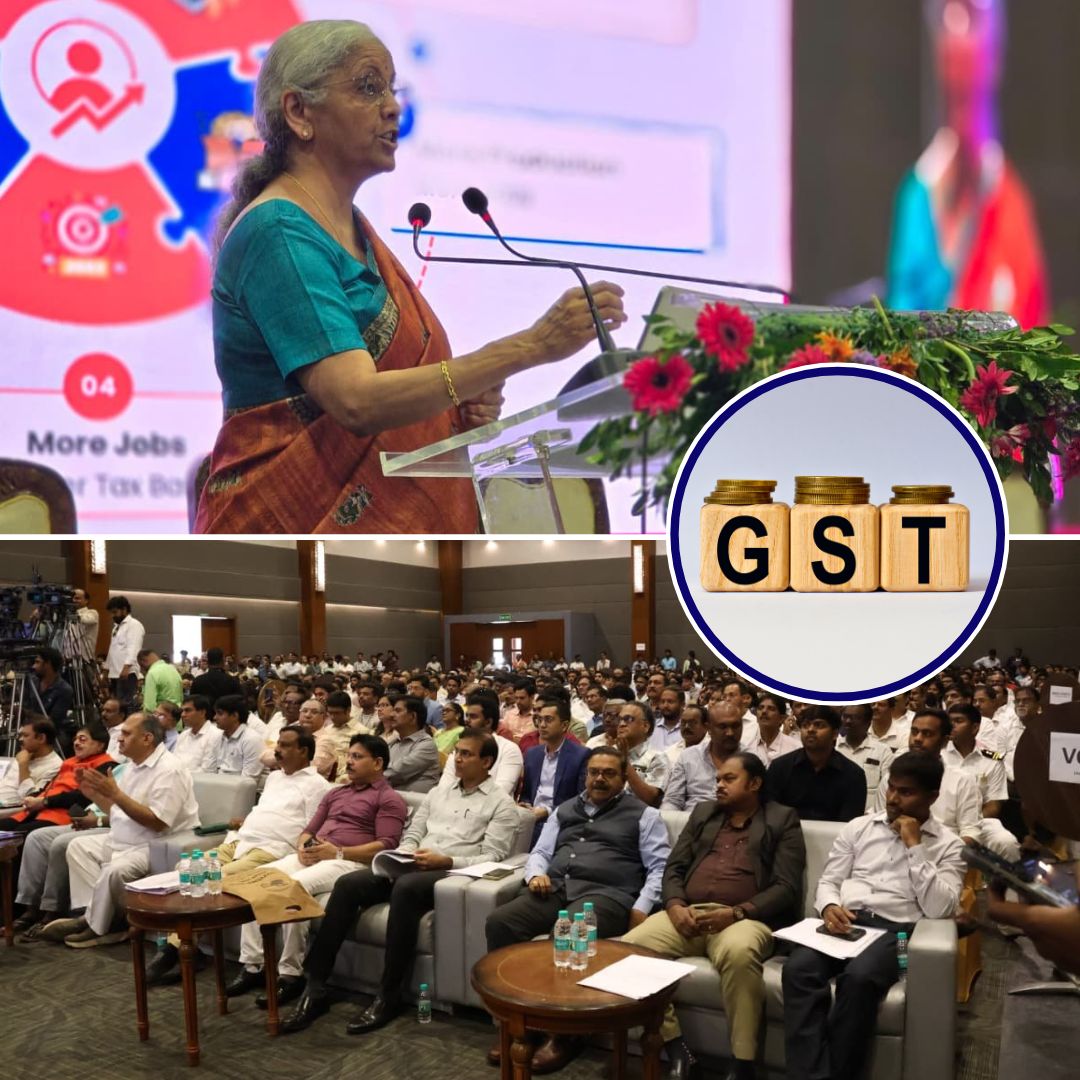Union Finance Minister Nirmala Sitharaman has announced the rollout of next-generation Goods and Services Tax (GST) reforms, set to take effect from September 22, 2025, which are expected to infuse ₹2 lakh crore into the Indian economy. The reforms aim to simplify the GST structure by rationalising tax slabs and drastically reducing rates on a wide range of essential goods and services.
Targeting relief for the common man, farmers, MSMEs, and key economic sectors, the move promises more disposable income for citizens and a boost in consumption, while easing compliance for businesses through digital reforms.
Simplified GST Rates and Major Relief Measures
The government has revamped the GST slab structure, replacing the previous four-tier system (5%, 12%, 18%, 28%) with two main slabs: 5% and 18%. Additionally, a 40% tax will apply to select luxury and sin goods, such as tobacco and aerated drinks. To ease the financial burden on households, about 99% of items earlier taxed at 12% have been cut to 5%, including everyday essentials like soaps, toothpaste, and Indian breads, which are now either taxed minimally or exempt.
Agricultural machinery, healthcare items, and many goods critical to farmers and daily wage earners also enjoy lower GST rates. The reforms notably reduce compliance costs for MSMEs with streamlined digital filing and faster refunds, empowering small businesses and improving cash flow.
Background and Government Vision for GST 2.0
Since its introduction in 2017, GST has unified numerous indirect taxes, but the complex rate structure and high compliance burdens have posed challenges. The current reforms were crafted following the 56th GST Council meeting, aligning with Prime Minister Narendra Modi’s vision of a simpler, fairer tax regime, dubbed “GST 2.0,” that supports growth and inclusive prosperity.
A significant milestone is the removal of the GST compensation cess from September 22, ending a temporary levy initially designed to compensate states for revenue losses during GST implementation. The government expects these reforms to drive demand and manufacturing growth in a post-pandemic recovery context, though experts caution that state cooperation and proper implementation will be critical.
What This Means for Consumers and Businesses
For consumers, the reforms are expected to ease price pressures on essential goods and daily needs, potentially increasing household spending capacity. Several staple foods and life-saving drugs have been either exempted or taxed at concessional rates. Businesses will benefit from a simpler tax regime that lowers operational complexity. Companies like FMCG giants have already begun passing the benefits of rate cuts to consumers ahead of the official rollout.
Meanwhile, sectors such as automobiles, consumer electronics, and footwear see significant rate adjustments, with some items moving from a 28% to an 18% slab. The reforms aim to build stronger trust between the government and citizens by ensuring fiscal policies support equitable economic growth.
The Logical Indian’s Perspective
These next-generation GST reforms mark a hopeful advancement towards a tax system rooted in simplicity, fairness, and responsiveness to the needs of everyday people and businesses alike. By lowering the tax burden on essentials and enhancing liquidity, the government signals a commitment to inclusive economic prosperity.
However, the real success will lie in making these reforms accessible and effective at the grassroots level, ensuring that the benefits reach the most vulnerable sections without being delayed by bureaucratic challenges. As citizens, active engagement and accountability measures are necessary to ensure promises translate into tangible relief.
𝐍𝐞𝐰 𝐆𝐒𝐓 𝐫𝐞𝐟𝐨𝐫𝐦𝐬 𝐰𝐢𝐥𝐥 𝐬𝐚𝐯𝐞 𝐭𝐡𝐞 𝐩𝐮𝐛𝐥𝐢𝐜 𝐚𝐫𝐨𝐮𝐧𝐝 𝐫𝐮𝐩𝐞𝐞𝐬 𝟐 𝐥𝐚𝐤𝐡 𝐜𝐫𝐨𝐫𝐞 𝐛𝐲 𝐫𝐞𝐝𝐮𝐜𝐢𝐧𝐠 𝐭𝐚𝐱𝐞𝐬, says Union Finance Minister Nirmala Sitharaman
— All India Radio News (@airnewsalerts) September 17, 2025
Addressing the Outreach Programme on Next-Gen GST Reforms held in Visakhapatnam,… pic.twitter.com/8dUS9KI1z8












